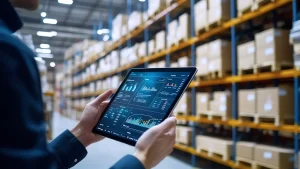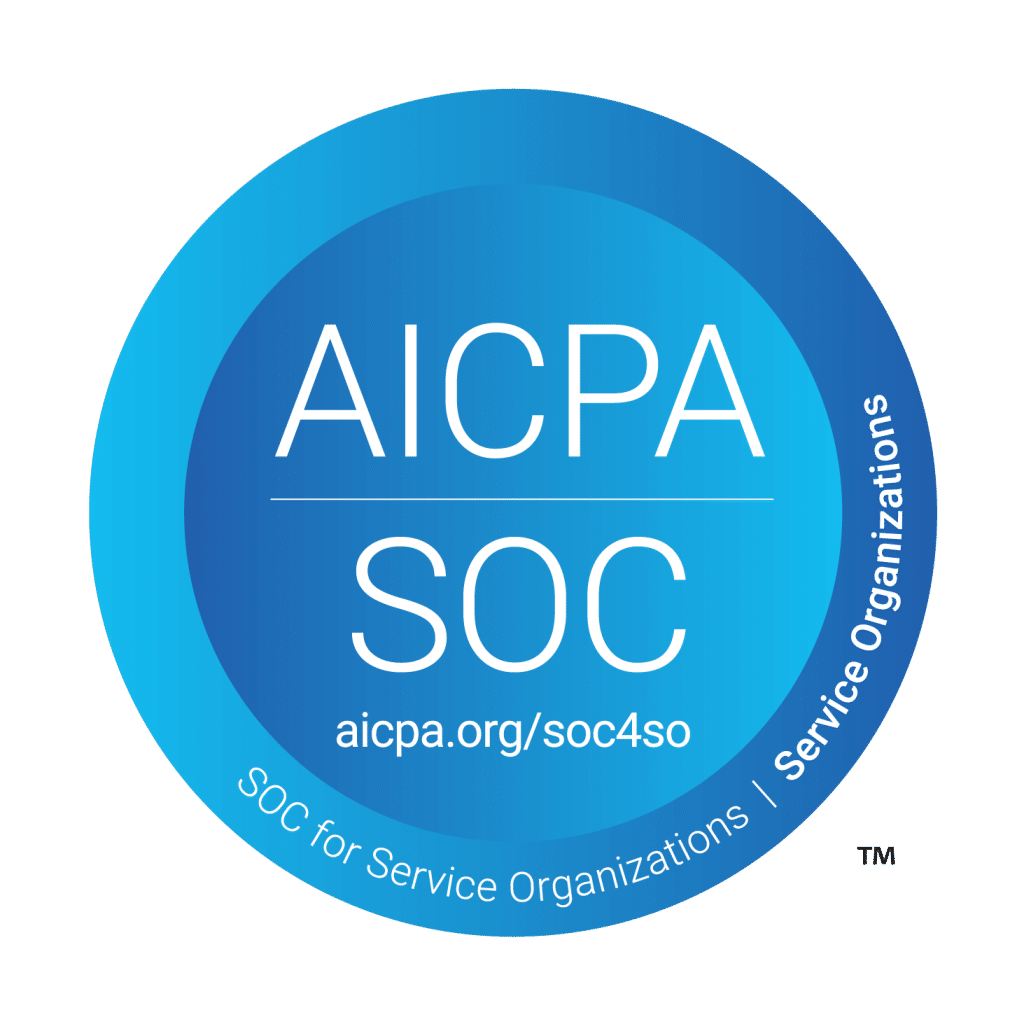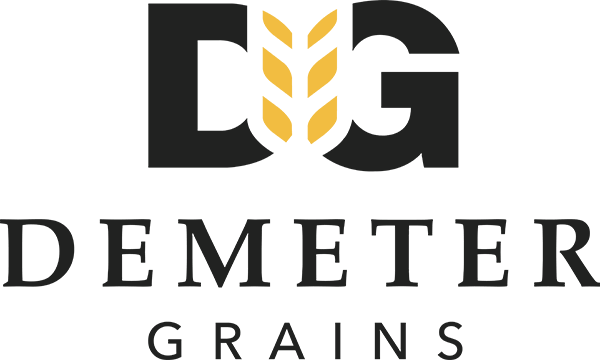Introduction
Commodity-driven businesses have to work in an environment marked by price volatility, multi-layered supply chains, and real-time valuations linked with quality. Sometimes, the difference between profit and loss is a 1% variation in moisture, or a truck that’s late, or a swing in the price on global markets. In such an environment, running critical workflows on spreadsheets, manual registers, and disconnected systems is unsustainable.
Commodity software has emerged to become the operational backbone for physical commodity enterprises, knitting together procurement, quality evaluation, storage and logistics, inventory accounting, price frameworks, and final settlement into a single digital system. Integrating field-level data with financial and operational visibility, it eliminates manual errors, strengthens traceability, and ensures consistent quality-based payouts. Be it grains and pulses, cotton processing, management of metal scrap yards, or energy materials handling, commodity management software helps a business operate with precision, discipline, and scale. It replaces fragmented procedures with consistent digital workflows that improve margin control, reduce operational leakage, and create audit-ready records. The following guide breaks down what commodity software is, why it is becoming essential across commodity supply chains, core capabilities to expect, leading platform considerations, and how businesses can adopt it effectively in 2025 and beyond.
What is Commodity Software?
Commodity software is an enterprise platform that manages the full life cycle of commodity operations. It supports procurement, storage, quality evaluation, logistics, pricing, hedging, and settlement activities for physical commodities. The system centralizes contract terms, quality rules, pricing formulas, inventory lots, logistics records, and financial outcomes. Commodity software supplants manual registers, isolated spreadsheets, and fragmented data flows with structured digital processes.
Most commodity software platforms provide:
- Digital contract and purchase workflows
- Quality testing and grade-wise pricing
- Lot-wise inventory tracking across sites
- Dispatch and weighbridge management
- Market pricing data and exposure monitoring
- Invoice settlement and reconciliation layers
Commodity software makes sure that every unit bought, handled, or sold is accounted for with real-time accuracy.
Why Commodity Software Is Becoming Essential
Operational Risk in Manual Systems
Commodity operations involve moisture variation, weight shrinkage, multi-point transport, and variable quality. The accompanying manual processes create risks such as pricing errors, undocumented losses, and delayed visibility.
Margin Sensitivity
A 0.5% variation in grade, weight, or freight allocation can have a material difference on commodity profitability. Software ensures precise calculations and transparent deductions.
Compliance and Audit Control
Accurate data trails are required for various regulatory programs, traceability mandates, and finance audits. Commodity software provides structured, timestamped records.
Scale and Multi-Location Management
Growing commodity companies have more suppliers, warehouses, and logistics partners. Software standardizes processes across locations and teams.
Commodity software isn’t just about digitization; it is actually the operating backbone for commodity businesses scaling up in volume and complexity.
Key Features of Commodity Management Software
1. Procurement & Contracting
Commodity procurement involves negotiated price terms, quality cut rules, delivery durations, and settlement timelines. Commodity software digitizes these terms, linking them to operational checkpoints and reducing ambiguity and manual errors.
For example, oilseed procurement may involve base rate + oil recovery + FFA penalty + moisture deduction. The software automatically applies these parameters during settlement.
2. Quality & Grading
Physical commodities all differ from batch to batch. The software records test values, such as, protein, ash, purity, and impurities, among others, and automatically includes applicable price adjustments. Quality checks are attached to contracts to make grade-based payments.
3. Inventory & Storage
Inventory is tracked lot-wise, by warehouse, grade, and quantity. Adjustments for shrinkage, fumigation, and blending are recorded. Real-time visibility of stock avoids over-booking and helps in dispatch planning.
4. Logistics & Dispatch
Dispatch orders, freight allocation, truck in/out, weighbridge data, and gate passes are captured digitally. This reduces pilferage, weight fraud, and documentation delays.
5. Market Pricing & Exposure
Commodity price feeds and historical trends provide the data required to plan procurement timing and hedge exposure. Pricing formulae are supported, together with linked commodity benchmarks.
6. Financial Settlement
Invoices, debit/credit notes, and deductions flow seamlessly from recorded quality and weight data. Integrations ensure that accounting is in sync, with transparent reconciliation.
Bulk Commodity Software vs. General Commodity Tools
Bulk commodity operations are associated with high-volume physical products whose weight, and quality constantly change in handling. Bulk commodity software is designed for real-world variability: moisture gain or loss, density shifts, storage shrink, spoilage, and multi-stage movement. General trading tools track only commercial position and trades; they cannot handle physical changes occurring during storage, procurement, or transport.
Bulk commodity operations involve:
Weighbridge integration
Bulk commodities are purchased and sold on the basis of weight. Direct integration to weighbridges removes manual entry errors and manipulation of weights for the most accurate intake and dispatch records.
Moisture and shrink logic
Bulk commodities like grains, cotton, metals scrap, and oilseeds naturally shrink or undergo changes in moisture. Software should apply moisture-based price adjustments while tracking net-to-gross differences transparently across batches.
Rack/warehouse stacking visibility
Storage is not generic shelf space; in other words, bales, bags, or bulk stacks have to be traced by physical zone, rack, bin, or silo. The system needs to know exactly where the stock sits, which helps to avoid inventory confusion and improves warehouse clearing.
Batch blending and grade mixing
Many bulk commodities are blended or mixed to achieve customer-grade requirements. Software must maintain grade integrity and pricing logic across lots blended together and ensure that historical traceability is maintained.
Multistage transfers and custody tracking
Bulk goods can change location multiple times: yard to warehouse, warehouse to truck, truck to processing plant. Every one of those transfers requires custody logging in order to avoid undocumented loss or disputes over ownership.
Bulk commodity software is built for physical operations natively and is thus intrinsically better suited than general commodity trading systems that are not designed with consideration for a real handling environment.
Commodity Software vs CTRM vs ERP
Commodity software, CTRM systems, and ERP platforms are designed for different but complementary functions: ERP systems focus mainly on finance and corporate accounting, while CTRM platforms focus on trading positions, hedging, and financial exposure. Commodity software manages the physical movement, quality evaluation, and settlement processes tied to real commodities.
Physical commodity operations
Commodity software manages physical intake, movement, storage, and delivery. CTRM systems may track commercial positions but often lack field-level operational workflows. ERP systems cannot handle per-lot physical behaviour.
Hedging & risk
CTRM systems are strong in derivatives management and hedge calculations. Commodity software offers only operational exposure tracking and does not have full derivatives engines. ERP systems provide basic financial reporting without any market-linked risk tools.
Quality & moisture logic
Commodity software captures moisture, impurities, and grade values, and applies deductions and premiums automatically. CTRM platforms may track grades but usually lack granular quality settlement rules. ERP usually treats inventory as fixed value and weight without dynamic commodity behavior.
Warehouse & Weighbridge
Commodity software integrates with weighbridges, lab equipment, and warehouse workflows. CTRM tools do not focus on field devices. ERP requires custom builds and still cannot replicate real handling behaviour.
Accounting
ERP remains the core accounting system. Commodity software and CTRM integrate into ERP for ledger posting, cost recognition, and reconciliation workflows.
In practice:
- ERP handles finance.
- CTRM manages trading and hedging.
- Commodity software manages physical movement, quality, price, and settlement.
Most commodity enterprise environments operate on ERP + Commodity Software as the core backbone, with CTRM added only for advanced trading and derivatives requirements.
Benefits of Commodity Software
Consistent quality-based settlement
Commodity pricing is often based on grade metrics, such as moisture, impurities, oil recovery, or purity levels. When these values are recorded manually, settlement becomes subjective and prone to disputes. Commodity software calculates settlement upon captured test results and pre-defined pricing rules, ensuring each supplier gets paid correctly for their quality delivered.
Lower process leakage and shrink loss
Commodity handling involves changes in moisture, storage losses, weight variations, and movements between different points. If systems are not structured properly, the losses may also go unrecorded. Commodity software will track every incoming and outgoing quantity, shrink percentage, and storage adjustment. It reduces leakage and holds teams accountable for accuracy in physical inventory.
Clean audit trails for finance and compliance
Operations in commodities need to be documented for contracts, quality, dispatches, and financial adjustments. Commodity software creates timestamped digital logs, making audit and compliance verification straightforward. This prevents undocumented deductions, eliminates paperwork gaps, and strengthens internal governance.
Real-time visibility across warehouses and transport legs
Visibility gaps lead to bottlenecks and delays when the movement of warehouses and transportation is tracked manually. Commodity software thus provides centralized, real-time inventory and logistics dashboards wherein teams can monitor grain intake, dispatch status, vehicle weighing, and storage levels at every location as transactions occur.
Accurate pricing and market timing decisions
Market volatility means timing of purchase and sale matters. Commodity software ties together price feeds with contract exposure and hedging information to help procurement and trading teams understand their risk positions and inform smart pricing decisions. It strengthens buying discipline and protects margins in the most volatile cycles.
Repeatable work processes instead of person-dependent ones
Traditional commodity operations are heavily reliant on individual judgment and manual experience. When teams change, process consistency drops. Commodity software standardizes workflows-from sampling to settlement-that make sure the business runs on defined rules rather than individual experience. This protects the institutional knowledge and enhances operational resilience.
Choosing a Commodity Software Platform
Multi-commodity support
Commodity processes vary across crops, metals, fuels, and industrial materials. It should be able to handle different commodity behaviours on one suitable platform, whether it is weighing bales of cotton, measuring the moisture in grain, or tracking metal scrap grades, without needing different systems.
Lot-wise and grade-wise storage logic
Physical commodities move in lots and batches, often mixed or re-graded over time. Software must support granular inventory control-capturing grade differences, blending, shrink, fumigation cycles, and warehouse stacking logic-to maintain stock accuracy.
Field data entry capable of working offline
The procurement of commodities generally takes place at mandis, yards, ports, farm gates, and remote handling points that have intermittent connectivity. The system should provide for offline inspection, grading, and weight entry, auto-syncing the data when the network is resumed.
Weighbridge & lab device integration
Commodity operations revolve around weight and quality accuracy. Integration with digital scales, weighbridges, and laboratory analyzers ensures data integrity, which prevents manual tampering or recording errors.
Configurable pricing formulas
Commodity pricing often involves base rate + premiums + penalties + deductions. The platform should provide flexible commercial logic to allow for calculating oil recovery premiums, moisture deductions, density bonuses, and impurity penalties.
ERP/Finance system integration
Finance and accounting systems must reconcile with physical movement records. The commodity software should interface with ERPs to ensure material movement and valuation entries flow seamlessly into the financial ledgers for correct settlement entries.
Scalability across sites and seasons
Commodity buying cycles are seasonal and volume-heavy during procurement windows. The platform needs to support high transaction loads, multiple warehouses, concurrent users, and rapid expansion across regions with no loss of performance.
Systems should match commodity behaviour and not force generic ERP logic.
Best Commodity Software Platforms
Though several platforms support commodity trading and supply chain workflows, the most effective systems combine quality tracking, logistics control, pricing automation, and financial accuracy. Leading solutions in 2025 include:
1. AgriChain: Purpose-built for agricultural and bulk commodity supply chains, providing end-to-end procurement, warehousing, quality measurement, logistics orchestration, and settlement workflows with real-time traceability.
2. Eka Software: Commodity management and CTRM platform for risk, trading, and procurement in agriculture, energy, and metals.
3. Gen10: Cloud-based commodity logistics and contract management system, with configurable quality and compliance workflows.
4. Aspect CTRM: An energy and metal-focused CTRM solution that offers a strong trade and risk module for both mid-sized and enterprise trading firms.
5. Openlink Endur: Enterprise-class platform for energy and financial commodity trading, with a main focus on derivatives and exposure management.
These platforms differ in strengths, ranging from the physical supply chain execution to trading and risk modules; all are designed to bring structure and visibility into commodity-driven operations.
Implementing Commodity Software
Successful adoption depends on mapping real workflows and not theoretical ones.
Process discovery and capturing of contract logics
The first step involves documenting existing procurement, quality, storage, and settlement processes. The contract rules, quality tolerances, and price logic have to be mapped so that the system reflects real business operations.
Quality and pricing parameter settings
Each commodity has its own distinct grading and pricing rules. At implementation time, a comprehensive setup of test parameters, sampling protocols, and deduction formulas is required in order to make correct and automated payments.
Warehouse and logistics workflow setup
Gate entry, weighment, unloading, storage, and dispatch sequences have to be configured. Physical checkpoints should reflect digital checkpoints so that the data corresponds with the on-ground movement.
ERP and accounting integration
Material entries, vendor payments, and cost values must flow into financial systems. Integration ensures that there is no mismatch between the physical movement and accounting records.
Pilot runs with real procurement cycles
A controlled live cycle validates the logic in such a way that formulas, workflows, and exception handling are tested with actual farmer receipts, market lots, and warehouse loads.
User training across procurement, QC, logistics, and finance
Commodity software touches several functions. Training ensures field buyers, weighbridge operators, quality teams, warehouse supervisors, traders, and finance staff use it in a standardized manner.
Continuous calibration and audit testing
Quality ranges, shrink norms, pricing tolerances, and exception workflows should be regularly reviewed after go-live to maintain alignment with market behaviour and regulatory needs.
What is as important is the field adoption and operational compatibility.
Future of Commodity Software
AI-based grade prediction
Camera vision and handheld sensors will be used to predict the grade of commodities, impurities, and quality outcomes using machine learning models, reducing manual grading disputes.
Sensor and IoT-enabled storage monitoring
Spoilage will be prevented and fumigation cycles automated through real-time moisture, temperature, and gas sensors in granaries, silos, tanks, and warehouses.
Blockchain traceability for sustainability programs
Records of end-to-end transactions will support certification programs, sustainability audits, and verification of farm origins for export-oriented markets.
Digital warehouse receipts and fintech integration
Digital collateralization and warehouse receipt financing will enable producers and traders to get instant working capital based on verified stock records.
Predictive supply chain forecasting
AI models will forecast yield patterns, procurement needs, transport planning, and demand cycles to further optimize commodity movement and storage capacity.
Automate trade settlements and optimize related risks.
Most settlements, hedge adjustments, and financing will be handled automatically through smart contracts and automated calculation engines, with very limited manual intervention.
Conclusion
Modern commodity enterprises use commodity software as core infrastructure. It enhances process control, improves margin accuracy, reduces operational loss, and enables data-driven planning. As the commodity markets grow in scale, regulation, and digital participation, structured digital operating systems assure long-term competitive advantage for the organizations building them. Commodity software ensures discipline, transparency, and adaptability in an increasingly dynamic commodity environment.
FAQs
What is commodity trading software?
Commodity trading software provides an online platform for executing, monitoring, and managing commodity trading activities. It provides full support for various activities such as market price tracking, trade capture, futures and options management, and risk exposure calculations. While it does assist traders in evaluating positions and their execution, it does not usually handle physical handling workflows such as weighbridge entries, grade checks, or warehouse movements-those functions are covered by commodity management software. Trading software focuses on market execution and financial exposure, rather than real-world commodity logistics.
What are the 7 ‘C’ commodities?
The “7 C commodities” usually refer to major globally traded raw materials starting with C: Crude Oil, Copper, Corn, Coffee, Cotton, Cattle, and Cocoa. These commodities are widely traded in international markets and represent important sectors such as energy, agriculture, textiles, and metals. They form the backbone of the international supply chain and are often tracked with derivatives because of high liquidity and price sensitivity.
Is software a product or a service?
This can be both, depending on how software is delivered and consumed. When software is mass-produced and standardized – say, a packaged tool used by thousands without customization – it acts like a commodity. In contrast, enterprise software platforms delivered as SaaS or implemented with configuration, integration, and service layers act like a service offering. Commodity management platforms usually fall into enterprise SaaS + services because they include configuration, workflow mapping, integrations, and ongoing operational support.
What is the difference between CTRM and commodity management software?
Commodity Trading and Risk Management, or CTRM, software focuses principally on the financial aspects of trading, derivatives, risk exposure, and mark-to-market valuation. It is designed for market participants who buy and sell commodities based on price movements and corresponding futures markets. Commodity management software, on the other hand, tracks the physical side of commodities: procurement, quality testing, logistics, weighbridge operations, storage, inventory tracking, and settlement. CTRM optimizes market positions; commodity management software optimizes the operational execution. Most large-scale enterprises use both: the CTRM system for trade decisions and the commodity software for end-to-end control over the physical supply chain.












